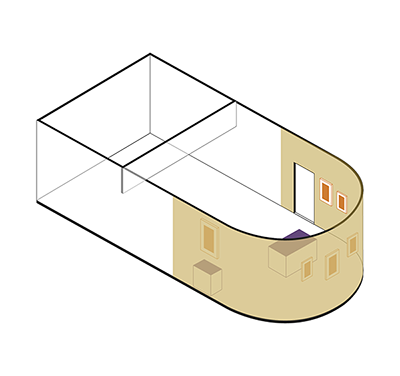
ABP 050
Code: ABP 050
Country: Tibet (south)
Style:
Date: 1400 - 1450
Dimensions in cm WxHxD: 35 x 42
Materials: Glue distemper on cotton
The principal panel of Chakrasamvara and his consort is surrounded by sixty-two deities including those being part of Chakrasamvara Mandala. The upper register depicts transmission lineage of the Chakrasamvara Tantra according to the tradition of ... ... ... ... ... ...:
1. Vajradhara (Tib. rDo rje 'chang)
2. Vajrapani (Tib. Phyag na rdo rje)
3. Saraha (Tib. Sa ra ha) (CSP 6)
4. Nagarjuna (Tib. Klu sgrub) (CSP 16)
5. Savaripa (Tib. Sha ba ri pa) (CSP 5)
6. Luyipa, Luhipada (Tib. Lo hi pa) (CSP 1)
7. Darikapa (Tib. Dha ri ka pa) (CSP 77)
8. Vajraghantapada (Tib. rDo rje dril bu pa) (CSP 52)
9. Kurmapada (Tib. Rus sbal zhabs
10. Jalandharapada (Tib. Shri dza landha ri pa) (CSP 46)
11. Krsnacarin (Tib. Nag po spyod pa) (CSP 17)
12. Guhyapada? (Tip. Gu hua pa)
(From Wikipedia, the free encyclopedia)
Cakrasaṃvara Tibetan: Korlo Demchog (Wylie: khor lo sdom pa / bde mchog) is the principal yidam, or meditational deity, and herukaof the Kagyu sect of Tibetan Buddhism. The Cakrasamvara sadhana is considered to be of the mother class of the Anuttara Yoga Tantra. Cakrasamvara is typically depicted with a blue-coloured body, four faces, and twelve arms, and embracing his consort Vajravarahi in the yab-yumposition. Other forms of the deity are also known, with varying numbers of limbs. Cakrasamvara and consort are not to be thought of as two different entities, as an ordinary husband and wife are two different people; in reality, their divine embrace is a metaphor for the union of great bliss and emptiness, which are one and the same essence.
Vajrayogini or Vajravarahi
Vajrayogini or Vajravarahi (Tibetan: Dorje Naljorma, English: the Vajra yogini; also Tibetan: Dorje Phagmo, Wylie: rdo-rje phag-mo, English: the Vajra Sow) is a dakini, a tantric Buddhist ishta-deva(Tib. yidam). Her sadhana(practice) originated in India between the 10th and 12th century. It evolved from the Chakrasamvara sadhana, where Vajrayogini appears as his yab-yumconsort, to become a stand-alone practice in its own right.
Vajrayogini is often associated with triumph over ignorance as well as with abandonment (one of her hidden aspects is Varuni, Hindu goddess of alcohol and intoxication). Vajrayogini is key to the advanced sadhanaof Chöd. Vajrayogini is visualized as the translucent, deep red form of a 16 years old female with the third eye of wisdom set vertically on her forehead. Iconographically, Vajrayogini, like most of the Dakini, is often signified with the investiture of Digambar. She is often pictured with a sow and is an important deity for tantric initiation, especially for new initiates - Vajrayogini's practice is said to be well-suited to those with strong desirous attachment, and to those living in the current "degenerate age". Her consort is Chakrasamvara, who is often depicted as a spear on Vajrayogini's shoulder. The seven-headed form of Vajrayogini is similar to the Hindu goddess Chinnamasta. Vajrayogini is the yidamthat a meditator identifies with when practicing Six yogas of Naropa
In Tibet the abbess of Samding monastery, on the shores of the Yamdrok Tso Lake near Gyantse, was traditionally a tulkuof Dorje Phagmo. The current incarnation resides in Lhasa.
Bock, Etienne; Falcombello, Jean-Marc; Jenny Magali, 2022. Trésors du Tibet. Sur les pas de Milarépa.. Paris: Flammarion. P. 158-159
Kalista, Kathleen, 2009. Masterpieces of Himalayan Art. From a European Private Collection (Collection Axel Ball), (catalogue of the sale exhibition held at Carlton Rochell Ltd, New York, September 11-25, 2009). Carlton Rochell Asian. Pl. 13: Cakrasamvara. Tibet, 14th century.
Kalista, Kathleen, 2009. Masterpieces of Himalayan Art. From a European Private Collection (Collection Axel Ball), (catalogue of the sale exhibition held at Carlton Rochell Ltd, New York, September 11-25, 2009). Carlton Rochell Asian. Pl. 13: Cakrasamvara. Tibet, 14th century.

